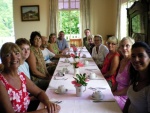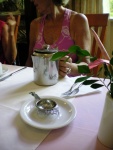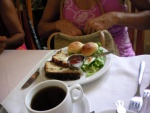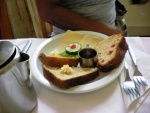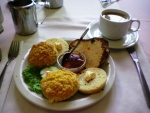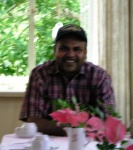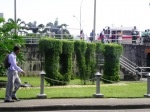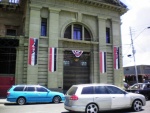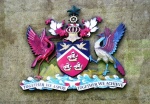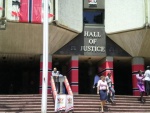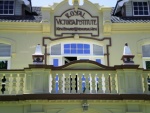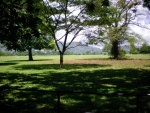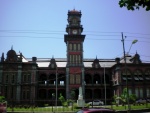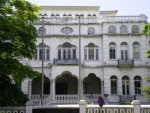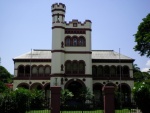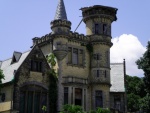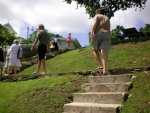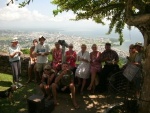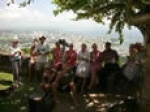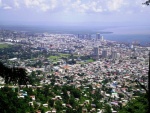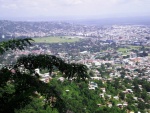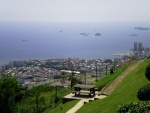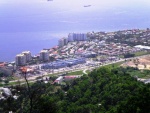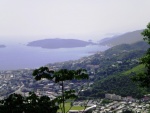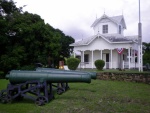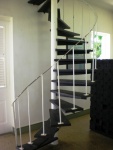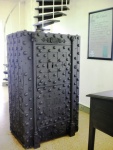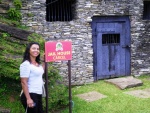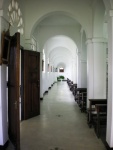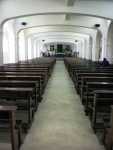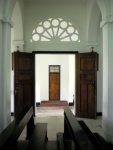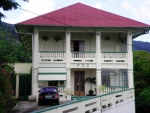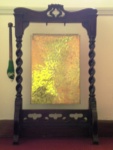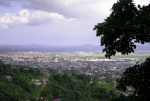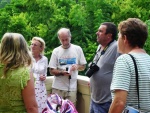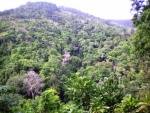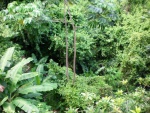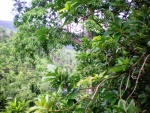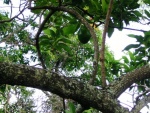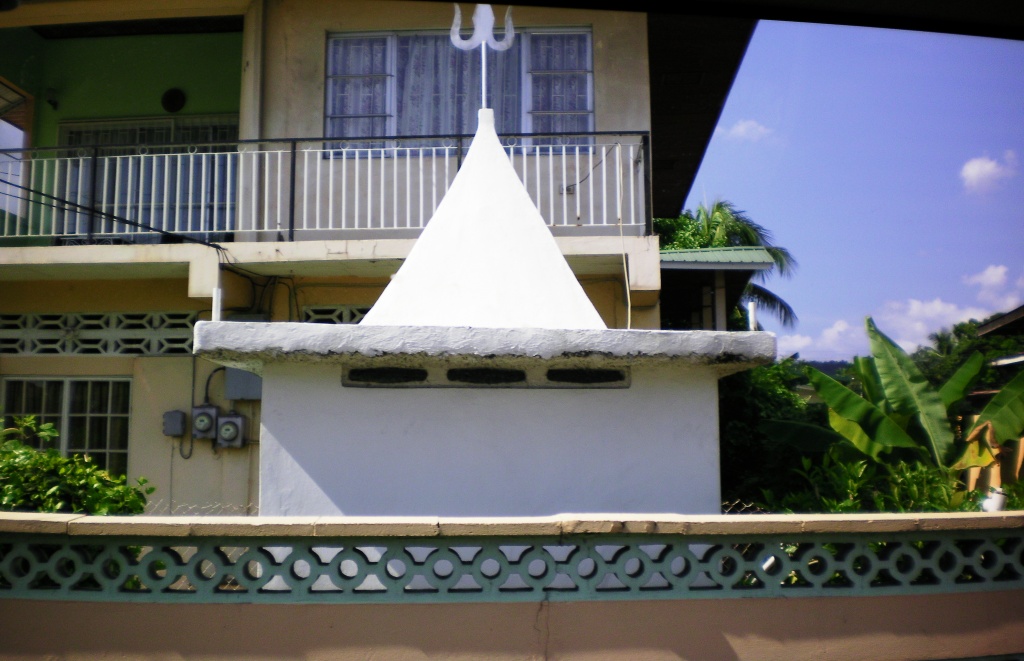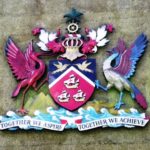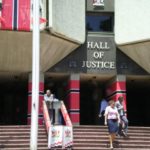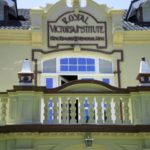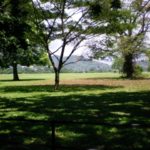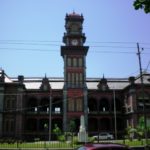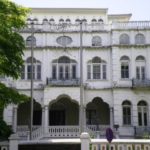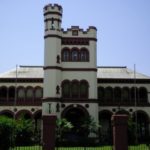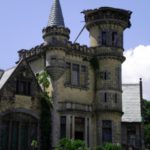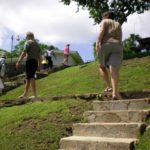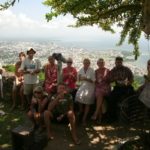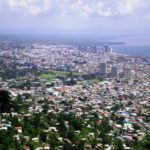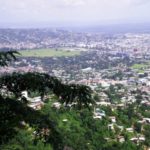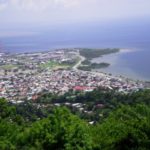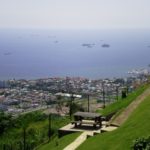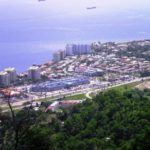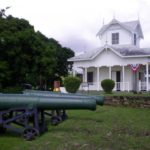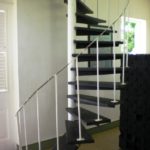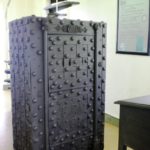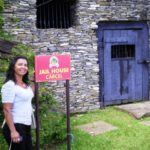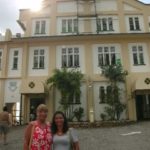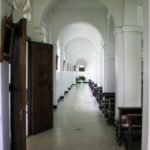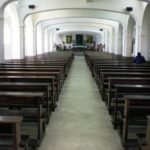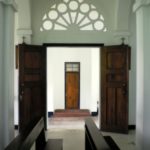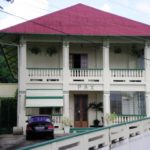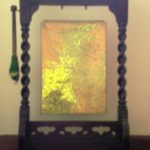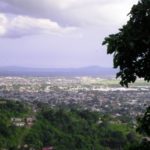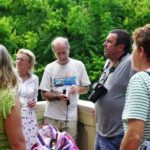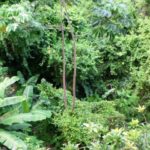A Cultural Tour of Trinidad
by Mark & Willie
Our cultural tour of Trinidad started with an oral history by Jesse James, the owner and proprietor of “Members Only Maxi Taxi Services” and our guide for the day. Jesse gives an outstanding living oral history of Trinidad and the lucky tourist riding with him savors every kernel of cultural knowledge he imparts.
As we headed to Port of Spain, Jesse pointed out important landmarks: the
Five Islands, Nelson’s Island and the former prison island. When he drives, Jesse talks constantly about Trinidad and its major resources, geography, history, crime, religion, politics, transportation systems and people. He talks about Dr. Siegert and his Angostura Bitters, the reliance of the aluminum industry on the bauxite that transits through Trinidad, and the flour mills in Port of Spain. He talks about the Spaniards’ arrival and the years of British rule, the Amerindians and the end of slavery, the immigration of East India Indians to Trinidad and their subsequent settling of the land. He talks about Trinidadian independence (1962), the forming of the Republic (1976) and the most recent short-lived coup (1990). He talks about education and the rise of the university due to its research on “Witches’ Broom,” the disease that threatened to destroy the cacao industry. And, of course, he boasts about the famous Trinidadian cricket player, Brian Lara, who has a park named after him in the center of Port of Spain.Our first stop was the National Museum & Art Gallery, originally called the Royal Victoria Institute. Its permanent collections include native art and displays on Trinidadian history, athletic accomplishments, natural flora and fauna, and the discovery and harnessing of the offshore petroleum. We also saw a visiting exhibition of Inuit Wall Hangings from Nunavut, Canada.
Our next stop was the Queen’s Park Savannah, where we were able to view the “Magnificent Seven Houses.” These are Victorian-style mansions that border the park and are in various stages of restoration. One serves as the Archbishop’s residence, another as Queen’s Royal College, and a third is the Prime Minister’s Office and Residence. Stollmeyer’s “castle” is supposedly modeled on the Scottish castle Balmoral and is being renovated to serve as an ambassador’s residence in the future.
Leaving the city behind, we drove up a mountain to Fort George, built in 1804 by the British to defend against the Spanish and the French. After enjoying our lunch of doubles, we wandered around the grounds delighted by the lovely vistas since the Fort is at an elevation of 1100 feet overlooking Port of Spain.
At Fort George, the spartan Signal House served as a flag signal station in 1846, then a Morse code signaling post in 1902, and was finally decommissioned in 1964. Now a modest museum, the Signal House features an ancient spiral stairway, an antique desk and an impressive and imposing safe which is believed to have been used by wealthy merchants to store their records, cash and other valuables when war threatened. Adjoining the Signal House is the jail, whose bars are made from rifle barrels imprinted with the symbol of England’s King George III.
After a scenic drive into the Northeastern Range hills, we arrived at the Mount St. Benedict Monastery. As well as selling religious artifacts and books, the gift shop features their homemade yogurt in tropical flavors such as passion fruit and guava. We enjoyed more spectacular views from the road and breath-taking vistas of lush tropical foliage from their balcony. Then we had a proper British high tea, complete with scones, curried egg sandwiches and fruitcake.
Thank You, Jesse, for Another Wonderful Day!



